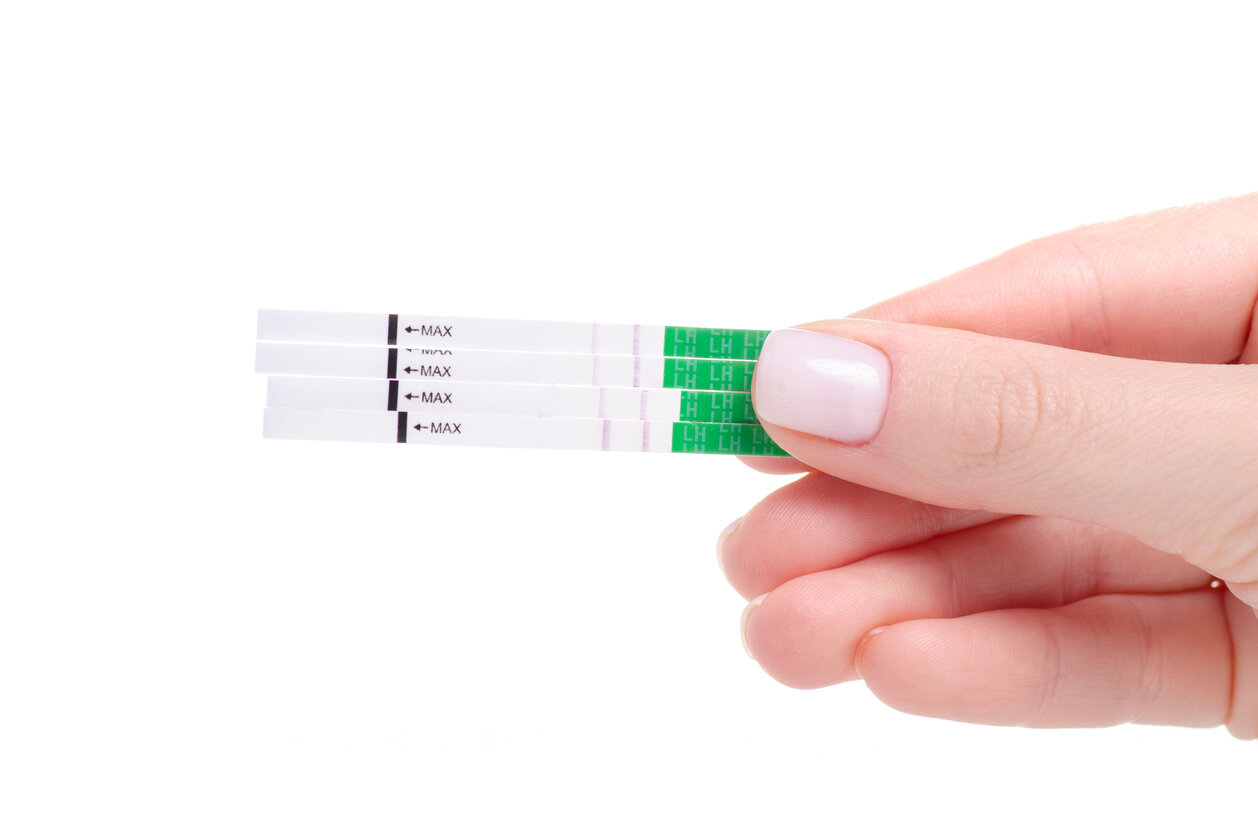Seven Ways to Know If You Are Ovulating
Ovulation typically happens about 10-14 days before a period and it’s important to have intercourse in the days leading up to or on ovulation when trying to conceive. So how do you know or predict when this might happen? It’s easier than you think! We’ve got plenty of ways for you below!
Disclaimer: We do not endorse any one method or brand. We will attempt to remain as impartial as possible and give you the many ways mamas to be can make sure they are ovulating.
1. Symptoms: Straight-up symptoms such as breast tenderness, bloating, and one-sided abdominal cramping mid-cycle (a.k.a. Mittelschmerz) are some of the simplest ways to predict if ovulation is occurring. That not so pleasant feeling that you get before you get your period but after you ovulate is due to the hormone progesterone! If you feel this, you are likely ovulating and making progesterone.
2. Regular Menses: If your period is more on time than planes landing at O’Hare, you are almost for sure ovulating. The cadence and regularity of the menstrual cycle is set by ovulation—the signals sent from the brain to the ovaries ultimately make their way to the uterus. In response to these signals, the lining of the uterus is shed in a predictable pattern. By association, you can see that, if the brain and ovaries are doing their job and ovulating, then your periods will be regular.
3. Basal Body Temperature (BBT) Charting: Your temperature charting looks like a convicted felon’s polygraph test. If there are pretty predictable highs in the second half and lows after your period, you are likely ovulating. Progesterone is a “hot” hormone. Therefore, after you ovulate, your temperature will rise. It will remain elevated as long as progesterone is on board. If pregnancy is not achieved, the corpus luteum in the ovary will break down, and with it, a drop in progesterone and your temperature, which will be correlated with the start of your period. P.S. in order to get an accurate BBT reading, you must take your temp first thing in the morning before getting up to use the bathroom or cuddle. As you move around, it will start to rise, so make a habit of keeping it by your bed for temp taking and recording as soon as you wake up!
4. Cervical mucus changes: Although most of us have not paid any attention to what our cervix is producing before we cared about progesterone and pregnancy, cervical mucus (aka vaginal discharge) changes are a pretty good way to predict ovulation. The cervical mucus changes throughout the cycle, ultimately becoming a hospitable and welcoming place for sperm in the days leading up to ovulation (after ovulation, it goes back to being uninviting once again). The changes are not only evident to the sperm but also often obvious enough to track. After a menstrual period, the discharge is somewhat dry, but after a few days becomes white and pasty. It then changes to watery, clear, slippery and stretchy mucus in the days leading up to ovulation when estrogen is high. Aim for timing intercourse with this slippery discharge when trying to conceive! It’s is the sperm-friendly mucus and means ovulation is imminent. After ovulation, it becomes white and creamy like lotion in response to progesterone.
5. Ovulation Prediction Kits (OPK): It’s hard to walk into a drugstore without seeing an OPK. They seem to hang out next to the pregnancy tests—and as you can imagine, this can be sort of frustrating. Their popularity comes from their ability to predict ovulation and help couples time intercourse. By measuring the LH level in the urine (LH is the hormone released by the brain, which tells the ovary to ovulate an egg), you can pretty reliably predict when or if you are going to ovulate. Although a small percentage of women (about 7%) will get a false positive—the test says you’re ovulating but you’re not—for most women, it is pretty reliable way to predict ovulation.
6. Ultrasound measurements: Serial ultrasounds done from pre- to post-ovulation are another way to confirm ovulation. The presence of a large follicle followed by the absence and then the presence of a corpus luteum lets you know ovulation has occurred.
7. Progesterone level: The king of ovulation confirmation is checking a serum (blood) progesterone level. Anything greater than 3 ng/mL(nanograms per milliliter for the science buffs!) in the mid-luteal phase is a positive. Note the boldfaced mid-luteal; timing is important when checking your progesterone. Day 21 is not day 21 for all of us! Make sure to mention how long your cycles are to your doctor before getting your blood drawn. And although we all obsess over what the level is and how high is too high and how low is too low, all we are looking for is a positive result to confirm ovulation.
So you see, there are really plenty of ways to know if your body is ovulating and producing progesterone. Some are costlier than others, some are more labor intensive than others, and some are more accurate than others. But whatever you choose to check the ovulation box, it’s important that you do something to cross it off the list when trying to conceive.
Confirming ovulation is an essential part of any fertility work-up. It may seem basic, but without an egg, there can be no embryo! Good news is that, when women have ovulatory issues, they usually have a ton of healthy eggs just hanging out waiting to be released, and we have lots of ways to persuade those eggs to come out! We just have to see why they are being so shy and what we can do to coax them out of their shell!
